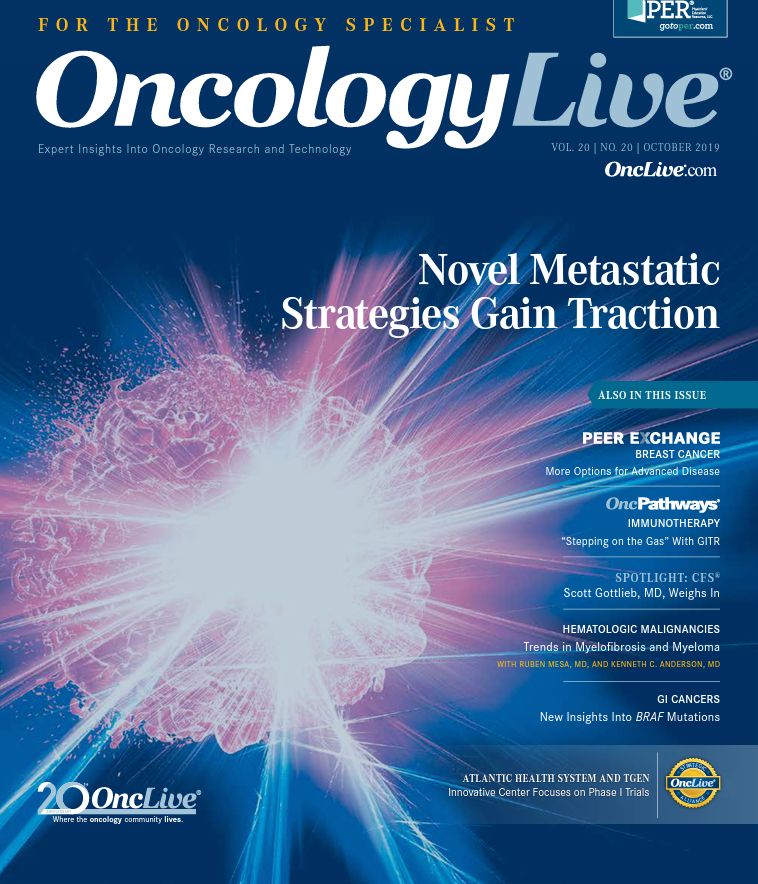Publication
Article
Oncology Live®
End-of-Life Treatment Has Important Nuances
Author(s):
Even if a disease is diagnosed as “incurable,” or progression to a state of incurability subsequently develops, the time between diagnosis and death is being prolonged and the quality of life improved with novel oncologic interventions, such that continued therapeutic efforts are justified.
Maurie Markman, MD, editor in chief, is president of Medicine and Science at Cancer Treatment Centers of America and clinical professor of medicine, Drexel University College of Medicine

Maurie Markman, MD
A most thoughtful commentary published in a recent edition of The New York Times highlights the critically relevant issue of end-of-life care in the oncology arena.1 The author, Jane Brody, personal health columnist for The Times, poignantly recalls that when her husband was “nearing death from lung cancer,” she “authorized radiation treatments in hopes he could attend a concert of the theater songs he had written.” Later, she regretted having done this. “After he died, I realized how much my goal tormented his last weeks with treatments he didn’t want,” she wrote, concluding, “I now realize that how people spend their remaining days should be a personal decision based on sound medical advice and free from other people’s influences.”1
The article includes comments from others regarding the potential lack of utility of chemotherapy near the end of life and the observation that “too often, people with incurable cancers pursue therapy beyond any hope of benefit except perhaps to the pockets of Big Pharma.” Note that individual patients and their families might reasonably take exception to “beyond any hope of benefit.”
However, it is the final short paragraph of this likely widely read personal opinion piece that forms the basis of my commentary here. Brody makes the rational statement that “sometimes…chemotherapy or radiation is offered to patients near the end of life to alleviate debilitating symptoms.”
Unfortunately, and surprisingly, Brody finishes with this: “But the goal of such palliative therapy should be made clear to patients lest it give them false hopes for a cure.”
Although the term cure has various definitions in the context of cancer care, it is generally understood to imply the elimination of cancer in a patient, or at least the belief that the cancer will not be clinically evident during the remainder of the affected individual’s life.
It is surely widely understood why a declaration that a patient “is cured” or “will be cured” is so powerful following the diagnosis of cancer, a constellation of diseases associated in the minds of most with a terribly unpleasant and otherwise certain death. In fact, in a study published almost 60 years ago about physician communication with patients regarding the diagnosis of cancer, the author notes that the word cancer “should be understood to apply to all malignant neoplasms of characteristically grave prognosis.”2 Further, this analysis revealed that “almost 90%” of physicians surveyed rarely informed patients of the actual diagnosis.
A physician included in the study was quoted as having “referred to cancer as an ‘incurable disease with an inevitable demise,’” which at the time was not an atypical professional opinion, the author wrote. Further, “the general feeling was that we can do very little to save lives and not a great deal to prevent suffering.”
Finally, the report added that “the vast majority of these doctors feel that almost all patients really do not want to know regardless of what people say,” and concluded with the comment that “there is no doubt that this disclosure has a profound and potentially dangerous impact. Questions do arise about the capacity of human beings to make a satisfactory adaptation to the expectation of death.”
With this background, it should come as no surprise that former US Secretary of State John Foster Dulles was not told the reality of his disease when, in 1956, he was diagnosed with what was apparently “Dukes C” colon cancer, well known for its high risk of recurrence. He was informed that “if there is no recurrence of the cancer within 18 months, he could consider himself cured.”3 The cancer proved fatal.
As a medical community, we have surely come a very long way from such a stunningly unacceptable and paternalistic communication philosophy, even though cancer still is not curable in many settings, as may be evident at diagnosis or subsequently documented during an individual patient’s cancer journey.
Yet, here we are in 2019 with a commentary written in a leading lay publication that declares that the administration of systemic therapy “near the end of life” (a somewhat vague period of time) runs the risk of giving patients a “false hope of cure.”
Is a cure the only objectively legitimate goal of such treatment? Isn’t extending survival with a meaningful quality of life, as specifically defined by the individual patient and not an abstract group of patients who completed a survey in a clinical trial, an equally valid goal of such treatment?
I believe it is highly unlikely that the writer of The Times article intended to suggest that extending survival is not a meaningful aim of therapy, if that is the personally articulated goal of the individual patient. However, rhetoric within the lay or medical literature is problematic, if it continues to suggest that in the management of cancer there is (1) a cure and (2) that anything less falls into the category of “incurable” with its associated connotations.
Today, frequently, advanced cancers are appropriately viewed as being very serious but more chronic conditions, for which a cure may be an unlikely ultimate outcome and death most frequently a result from progression of the malignancy. However, even if the disease is diagnosed as “incurable,” or progression to a state of incurability subsequently develops, the time between diagnosis and death is increasingly being prolonged and the quality of life improved with state-of-the-art and novel cutting-edge oncologic interventions, such that continued therapeutic efforts are justified.
References
- Brody JE. Cancer treatment at the end of life. The New York Times. August 5, 2019. nytimes. com/2019/08/05/well/live/cancer-treatment-at-the-end-of-life.html. Accessed September 26, 2019.
- Oken D. What to tell cancer patients: a study of medical attitudes. JAMA. 1961;175(13):1120-1128. doi: 10.1001/jama.1961.03040130004002.
- Lerner BH. Politician as patient: John Foster Dulles battles cancer. In: When Illness Goes Public: Celebrity Patients and How We Look at Medicine. Baltimore, MD: The Johns Hopkins University Press; 2006:81-99.









